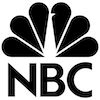|
What is an EGWP or Egg Whip?
Click on the RDS vs EGWP infographic for full size image.Because of recent healthcare reform initiatives, an EGWP is the most cost-effective way for organizations to provide retiree prescription drug coverage. An EGWP, commonly referred to in retiree benefit plan parlance as an “egg whip”, is a group Medicare Part D prescription drug plan option that is offered to retirees who have been promised prescription drug coverage as part of their Other Post-Employment Benefits (OPEB). Benefit solutions partners contract with the Centers for Medicaid and Medicare Services (CMS) to serve as a Medicare Part D Plan Sponsor and manage compliance with CMS regulations with regards to Part D prescription drug plans for retirees. Medicare Part D subsidies and discounts are used to reduce the fully insured premium. With an EGWP there is no subsidy filing required for the group sponsor. Key EGWP Information Normally EGWPs are administered through a pharmacy benefit manager (PBM) or insurer (Health Plan/Carrier)that contracts directly with the Centers for Medicare & Medicaid Services (CMS). Plan options are available that close the gap in retiree Medicare coverage, known as the doughnut hole. Under the EGWP there are three substantial subsidies and discounts that lower the cost of prescription drugs for plan sponsors and their members. 1. CMS Direct Subsidy – Per member subsidy of approximately $500 annually, based on risk scores calculated by Medicare. This subsidy alone is often equal to or more than the amount plan sponsors receive from the RDS Subsidy. 2. The Coverage Gap Discount Program – Provides a 50% Discount on brand-name drugs when the member is in the Part D coverage gap. 3. Catastrophic Insurance – Medicare provides 80% reinsurance for the highest utilizers. The Medicare Part D law was passed in 2003 and took effect in 2006. The federal government created two methods that gave employers impressive subsidies and tax incentives to keep retired employees on their prescription drug plans. Under the Retiree Drug Subsidy (RDS), the government was paying up to 28% of the covered Medicare-eligible retirees maintenance drug program (MDP) expenses directly to the participating enterprises. The RDS subsidy was tax free to the employer. Changes in RDS That Make EGWPs very attractive? The original Retiree Drug Subsidy (RDS) has been adversely affected by the 2013 Patient Protection and Affordable Care Act (PPACA) for self-funded employers. Effective January of 2013, the PPACA wipes out the full value of the tax deduction of those retiree drug expenses. This is now causing self-funded retiree drug benefit plan providing companies to see a significant cost increase. This is where the EGWP solution becomes a much more desirable option as it decreases administrative costs while at the same time increases the per participant contribution substantially. Accounting Benefits of EGWP Programs for Governmental Entities? Governmental entities receive an additional accounting benefit under an EGWP program. The savings from the EGWP can be reflected in the current year liability calculation. Under the RDS subsidy program, future projected RDS reimbursements cannot be included. The savings involved can positively impact accounting for GASB 43/45. How an EGWP +wrap Maximizes Retiree Prescription Drug Benefit Savings? By combining an EGWP with a non-Part D commercial wrap plan, EGWP benefit solutions partners can help plan sponsors take full advantage of the Coverage Gap Discount Program. The wrap plan is transparent to plan participants as they receive a single prescription drug card for all their Rx purchases.
0 Comments
Leave a Reply. |
AuthorA seasoned healthcare sales executive and a leader with 26 years of Health Insurance and Managed Care experience, a strategist, innovator and motivator with a vast and deep understanding of Managed Care Organizations and the health insurance industry and its critical nuances and complex design.. Archives
April 2024
Categories |
AS SEEN ON
DISCLAIMER: The information provided in our programs including health shows, discussions on fitness, wellness, business, and any other topic we engage with and address, is for informational, sharing resources and entertainment purposes only. It is not intended as a substitute for professional advice, consultation, or guidance. Viewers should always seek the advice of qualified experts or professionals in the respective fields before making any decisions or taking any actions.
While we strive to provide accurate and up-to-date information, we make no representations or warranties of any kind, express or implied, about the completeness, accuracy, reliability, suitability, or availability of the information contained in our health shows or discussions on other topics. Any reliance you place on such information is therefore strictly at your own risk.
We strongly encourage viewers to do their due diligence and independently verify any information presented in our health shows or discussions on other topics before making any decisions or taking any actions. This includes consulting with appropriate experts or professionals who can assess your specific situation and provide personalized advice.
We, THE EMBC NETWORK and its channels, affiliates, officers, directors and guests shall not be held liable for any loss or damage, including but not limited to, indirect or consequential loss or damage, arising from the use of, or reliance on, the information presented in our health shows or discussions on other topics.
By accessing and viewing our programming and shows or participating in discussions on other topics, you acknowledge and agree to the terms of this disclaimer and take full responsibility for any actions you take based on the information provided.
While we strive to provide accurate and up-to-date information, we make no representations or warranties of any kind, express or implied, about the completeness, accuracy, reliability, suitability, or availability of the information contained in our health shows or discussions on other topics. Any reliance you place on such information is therefore strictly at your own risk.
We strongly encourage viewers to do their due diligence and independently verify any information presented in our health shows or discussions on other topics before making any decisions or taking any actions. This includes consulting with appropriate experts or professionals who can assess your specific situation and provide personalized advice.
We, THE EMBC NETWORK and its channels, affiliates, officers, directors and guests shall not be held liable for any loss or damage, including but not limited to, indirect or consequential loss or damage, arising from the use of, or reliance on, the information presented in our health shows or discussions on other topics.
By accessing and viewing our programming and shows or participating in discussions on other topics, you acknowledge and agree to the terms of this disclaimer and take full responsibility for any actions you take based on the information provided.
'Privacy Policy for Mobile App Usage on iOS and Android Platforms'
|
 RSS Feed
RSS Feed



























